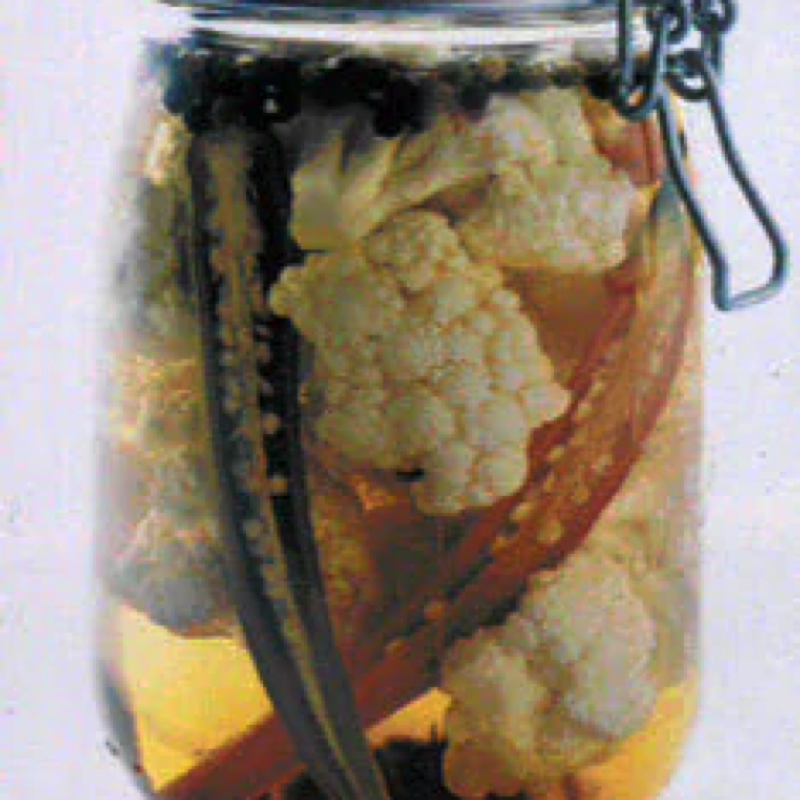The principles of healthy eating
The mainstay of a healthy diet is plenty of unrefined complex carbohydrates and fibre. Foods such as beans, lentils, potatoes, wholemeal pasta, wholegrain bread and cereals should make up – quite literally – the bulk of our diet. Protein-rich foods, such as meat or fish, can be added to this carbohydrate base in small amounts. Contrary to popular belief, we don’t need very much protein for good health and it is not necessary to eat meat, fish and dairy products as a daily source of protein. The other essential ingredients in a heathy diet are vitamins, minerals and phytochemicals (biologically-active substances in plants) which are found in abundance in fruit and vegetables, and essential fatty acids from nuts, seeds, oily fish and oils such as olive oil.
This basic template for healthy eating closely matches the traditional diet that is – or was – eaten in many cultures. Civilizations throughout history have relied upon a combination of cereals and pulses for their staple diet. In Asia this combination is rice and soya; in America it was corn and beans; in Europe it was wheat, rye, barley, oats or buckwheat and beans, lentils or other pulses; and in Africa it is wheat, millet or sorghum and beans or chickpeas. Traditionally, a variety of fruit and vegetables (often eaten raw) have complemented this diet, together with small amounts of meat and fish when available.
Fermented foods, such as cheese, yoghurt, curd, fish sauce, pickled vegetables, cider, beer and wine – all of which have a beneficial effect on the gut – also feature in the traditional diet. This diet is ideally suited to the human body – it is rich in friendly bacteria, fibre and nutrients and helps to maintain a healthy biological balance in the gut.
It is very easy to adopt the healthy eating habits that are characteristic of such diets by following these simple common-sense measures:
Buy more fresh fruit and vegetables (they are rich in antioxidants – substances that help to prevent degenerative disease such as cancer and heart disease), cereals, pulses and fish.
Cut down on meat, dairy products and convenience food.
Replace meat with oily fish.
Tailor food intake to match your actual calorie needs (for most people this means eating less).
Buy a cook book that emphasizes the Mediterranean diet.
Reduce your intake of sugar, coffee, tea, fizzy drinks and alcohol.
Eat at regular intervals (up to five times a day if this suits your needs).
Eat food that is in-season and, ideally, locally produced.
Make sure that your diet is as varied as possible.
Use fresh ingredients as often as possible; avoid canned or dried food which contains additives.
Be flexible in your eating – aim for balance and enjoyment. Avoid rigid dietary programmes.
How the modern diet fails
These principles of healthy eating contrast starkly with the diet that is increasingly common in the West. Whereas the diet of our pre-industrial ancestors was rich in fresh produce, the modern diet, which has evolved over the last 50–60 years, is characterized by food that contains preservatives, colorants, taste enhancers, sugar, caffeine and even traces of fertilizers, pesticides, antibiotics, hormones and metals. This leads to a proliferation of unhealthy bacteria in the gut, an accumulation of toxins in the body, poor digestion and an increased likelihood of allergies, cardiovascular disease and cancer of the colon.
In the West, food is abundant (the amount produced far exceeds our needs) and relatively cheap owing to modern production and processing techniques. These techniques have created what has been termed “food industrialization” – the production of large amounts of food quickly and cheaply at the expense of quality and nutritional content. Paradoxically, although we now have more choice in what we can eat, less time is devoted to the selection, preparation and consumption of food. Our diets often consist of a limited number of ingredients that we continue eating out of routine and convenience.
Much of the food that we buy is impoverished. For example, when fresh produce is out of season in one country, it is often imported from another, and much of its vitamin content is lost during transit or storage in refrigerators or on supermarket shelves.
Goodness is also depleted in the process of sterilization: in order to make fresh food “safe” and prolong shelf-life by eliminating micro-organisms, it is often sterilized or irradiated – yet this procedure renders it, quite literally, lifeless.
Although all unhealthy disease-causing bacteria are killed in the process, all the “good” bacteria and ferments are also destroyed.
These are important for digestion and in maintaining a healthy and balanced environment in the gut. Most milk, for example, is pasteurized, with the result that it does not contain natural ferments and is difficult for many people to break down and digest. Milk products that have not been pasteurized, such as live yoghurt (which is full of lactobacilli bacteria), are well tolerated by most people.
Another consequence of sterilization is that, if food is left out of the refrigerator for too long or is reheated too many times, micro-organisms, such as listeria, will re-establish themselves. Without competition from good bacteria, the unhealthy ones can proliferate unchecked and cause disease.
Industrialized food production is partly responsible for a range of contemporary health problems such as male hormone imbalance (linked to the misuse of hormones in animals), the advent of antibiotic-resistant strains of bacteria (linked to the routine addition of antibiotics to animal feed), salmonella in poultry and eggs (linked to poor living conditions among animals), and Creutzfeldt-Jacob disease (linked to bovine spongiform encephalopathy or BSE, a disease affecting cows that is caused by contaminated cattle feed).
Genetic modification of food is the latest in a catalogue of food-production experiments that I believe may have harmful long-term effects on human health and the environment. The defensive attitude of scientists who argue that “no evidence exists that genetically-modified (GM) food is unsafe” needs to be challenged – this kind of negative statement does not constitute proof that GM food is safe.
Due to the wide-ranging effects of food industrialization it is important that, as consumers, we make informed choices about what we buy – not just favouring foods that are unprocessed and grown according to organic principles, but also excluding products that are nutritionally-empty and preserved and enhanced in artificial ways.
The medicinal value of food
Our knowledge of the healing power of food is based upon thousands of years of tradition and empirical observation. Modern scientific research now confirms the curative abilities of foods that have been used therapeutically through the ages.
A huge variety of foods are known to contain compounds that have medicinal properties.
For example, the potent antibacterial action of allicin, a substance found in garlic, is well documented. So too are the protective and healing properties of antioxidants and essential oils found in fruit, vegetables, herbs and spices.
Some pharmacologically-active ingredients are extracted from food and sold in tablet form. Cynarin, for example, is an active ingredient that is extracted from artichoke. An extensive body of research has shown that this substance can play an important role in treating liver disease and help damaged liver tissue to regenerate. The great advantage of using food as medicine is that food is readily available to all of us and can be self-administered with relative safety. Food cures work in a purely holistic way by enhancing the body’s natural functions and encouraging it to heal itself.
Selecting and harvesting ingredients
Whenever possible, use organically-grown fruit and vegetables, make sure they are fresh and avoid keeping them in a refrigerator for too long. When buying meat, buy organically-produced, free-range or farm-raised meat; buy small quantities of quality cuts rather than larger amounts of cheaper meat. Try to buy fish on the same day that it is delivered to your fishmonger.
If possible, try to harvest wild ingredients from your garden or local countryside. When picking ingredients, such as borage leaves, nettles and dandelion leaves, choose young plants that are growing away from main roads, rail tracks, and paths that are regularly used by animals.
Make sure that you can confidently identify the plants that you need and that what you pick is in good condition and fit for consumption. You can cultivate many herbs, such as camomile, lemon balm, savoury, mint, basil, thyme and rosemary, in your garden or in pots on a patio or balcony.
When harvesting wild fruit, such as berries, choose bushes and trees that are not exposed to pollution from roads. Collect only undamaged, ripe fruit and don’t be tempted to eat it on the spot – it must be washed thoroughly, and preferably cooked.

Extract from Food is Medicine by Pierre-Jean Cousin

